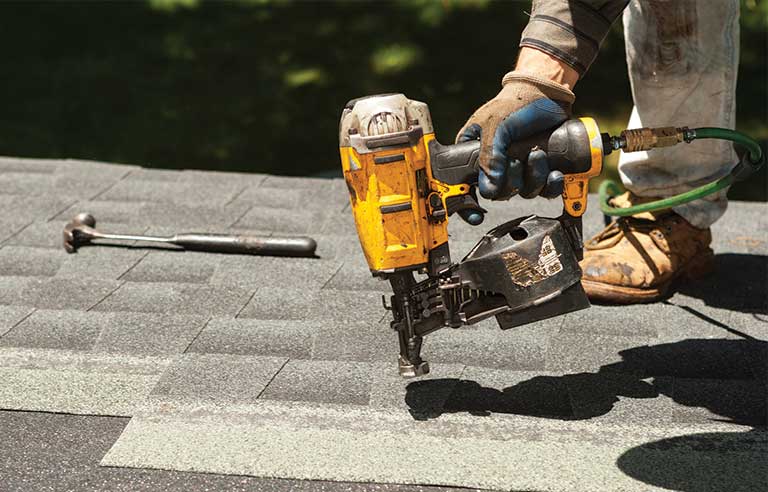
Silver Spring, MD — Roofers face an increased risk of fatal falls to a lower level compared with other construction subgroups, making fall protection strategies a vital component of roof work planning and training.
That was the message of an April 16 webinar hosted by CPWR – The Center for Construction Research and Training in conjunction with the National Roofing Contractors Association.
Multiple NRCA officials spotlighted basics of fall prevention and protection. “Of course, the challenge with roofing is that no two roofs are basically alike,” said Thomas Shanahan, the association’s vice president of enterprise risk management and executive education. “It’s a very dynamic versus static workplace, so it’s always changing, and so we have to be ever mindful of what are our options – what are the things we can be doing to protect workers so we plan for that.”
According to CPWR research released in 2019, although roofers experienced fewer fatal falls in 2017, the rate of fatal falls within the subgroup stood at 35.9 per 100,000 full-time equivalent workers – more than 10 times greater than the rate of all construction occupations combined.
The speakers highlighted the National Campaign to Prevent Falls in Construction – a joint effort of NIOSH, OSHA and CPWR – which offers three core steps to preventing falls:
- Plan ahead to get the job done safely
- Provide the right equipment
- Train everyone to use the equipment safely
In the event of a fall, Rich Trewyn, director of enterprise risk management at NRCA, said the two basic elements of rescue are delaying orthostatic shock while suspended, also known as suspension trauma, and bringing the fallen worker to a support surface such as the ground or roof. Carefully handle the fallen worker to ensure he or she is in a comfortable position, and call 911.
“All of this rescue portion is all about preplanning, and planning for an event that really isn’t going to be easy to plan for,” Trewyn said. “But it’s something that we can do, it’s something that we can practice for and make sure that we’re training our employees in the proper way.”
In the introduction to the webinar, Scott Ketcham, director of OSHA’s Directorate of Construction, discussed the agency’s efforts to mitigate “Construction Focus Four” hazards: caught-in or caught-between incidents, electrocution, falls, and struck-by incidents.
Citing data from the OSHA Information System database, Ketcham also displayed the agency’s “Top 10” list of most cited standards for construction for fiscal year 2019, noting that six involved an element of fall protection. Fall Protection – General Requirements (1926.501) topped the list with 6,881 violations, while Fall Protection – Training Requirements (1926.503) ranked fourth with 2,015.
With OSHA recently deciding to postpone the National Safety Stand-Down to Prevent Falls in Construction amid the COVID-19 pandemic, Ketcham gave updates on other planned outreach events in which the agency is involved. The Heat Illness Prevention campaign is on for the spring and summer; the Trench Safety Stand-Down remains “tentatively” scheduled for June 15-19; and Safe + Sound Week, slated for Aug. 10-16, is set to proceed as scheduled.


